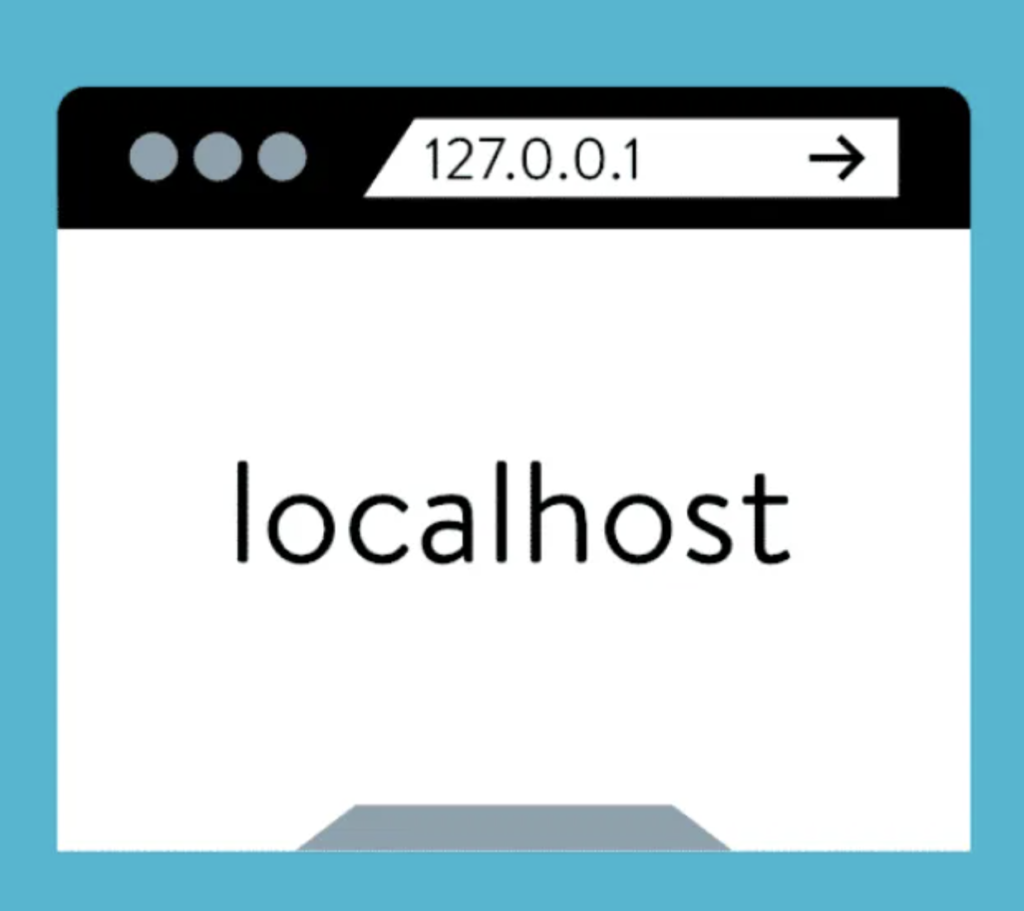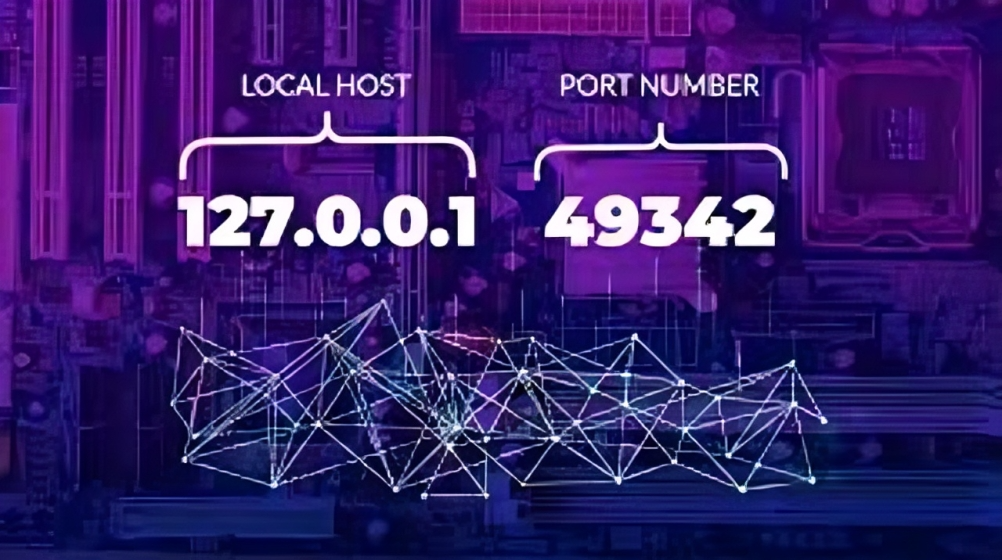Imagine building a website or testing some new application on your computer. Instead of getting connected up to the wider internet, you use something called “localhost.” But what is localhost, and why does 127.0.0.1:49342 matter? In easy terms, this is how your computer speaks with itself. It’s a very handy tool for developers to test and run services locally without having to expose them online.
Let’s go a bit more in-depth as to what this really means, and how it all works.
What is 127.0.0.1 and Localhost?
127.0.0.1 has also been referred to as the loopback address, which is a special IP assigned for internal communication within a computer. When using 127.0.0.1, it sends the traffic back into your own machine, thus creating a closed environment. This is priceless for local testing and even network diagnostics wherein developers can run servers or applications locally and not expose them to external networks.

“Localhost” is simply another name for 127.0.0.1. In web development and software testing, localhost is essential because it allows developers to test, debug, and try out the application in a safe, quarantined environment before putting it live on any server.
What is port 49342?
The port serves more or less as a virtual doorway through which data streams into and out of the system. One such example is Port 49342, a random arbitrary port number used with certain services or applications that enables them to be accessed through the local host address. Since each port is actually a different process, running various services without interference on the part of another service is definitely possible.

How Localhost and Port 49342 Work Together:
For example, when you connect to 127.0.0.1:49342, you end up accessing a local service running on your machine at port 49342. This pretty much is what developers do during development. You run an application locally on a port to test it before implementing it live.
Also Read: Cancel Paramount Plus in Minutes: Here’s How
Common Use Cases
Local Development Environments
Localhost, or 127.0.0.1, is a very important tool for any web, app, and software developer. It allows them to run services, such as web servers and databases, directly on their machines for testing and development. The developers can simulate a live environment, making changes and debugging issues without exposing their work to the public. This process ensures that by the time the code goes live, it has been thoroughly tested in an isolated space.
Web Development and Testing
In web development, localhost can be thought of as a personal server for a developer. They can just make websites run on their own machines using 127.0.0.1 and interact with the site as if it were live. In this way, developers can test out code, try new features, and find bugs without compromising the end-user experience in the least. Testing in this kind of environment is really very important before any public deployment.
Network Diagnostics
The use of localhost is also great for troubleshooting your network. Pinging 127.0.0.1 checks if the computer’s networking is functioning appropriately, even if it isn’t connected to the internet. IT professionals utilize this way in testing out a network card and see whether local services have fired up. This simple diagnostic step can be very useful in troubleshooting network or connectivity issues.
Local Database Testing
Databases such as MySQL, PostgreSQL, or MongoDB often would be set up on a local host, 127.0.0.1, for development. This lets developers securely connect to such databases on their machine itself. By using the localhost, developers are able to ensure the database works as expected and communicates well with their application before linking it to live data sources in production.
API Development
Most API developments and testing use localhost. It would be used to ensure that APIs work as they are supposed to by a developer and thus make debugging issues quite easy locally. This isolated environment ensures that APIs interact appropriately with the other parts of the application for smooth and reliable services.
Also Read: Resolve ‘Your Device Is Missing Important Security and Quality Fixes’ in Minutes
How to Use 127.0.0.1:49342
Connecting to a service running on 127.0.0.1:49342 can be done using various tools, each suited to different types of applications. Here’s a detailed guide on how to effectively utilize this localhost address for different scenarios:
1. Utilizing a Web Browser
To access a web application hosted locally at port number 49342, simply open your favorite web browser and type the following into the address bar:
http://127.0.0.1:49342
Hit Enter, and it will try to connect to the web server running on your computer at that port number. This would mean if there is a web application running active and configured to listen on this port, you would interface with it just like any live website. This is also done rather commonly in testing during the development of Web applications so changes show in real-time.
2. Using a Database Client
Suppose you are working on a local database server that listens on port 49342, so you’d want to connect to it with a database client, say MySQL Workbench or pgAdmin, or use whatever client tool fits best.
For MySQL: Open MySQL Workbench and create a new connection. Use the settings below:
- Hostname: 127.0.0.1
- Port: 49342
- Username: your database username
- Password: your database password
Click Connect, and if the database server is running and accepting connections on this port, you will be able to interact with your database, execute queries, and manage your data directly.
For PostgreSQL: Launch pgAdmin and add a new server connection with the following settings:
- Host: 127.0.0.1
- Port: 49342
- Username: (your database username)
- Password: (your database password)
3. Network Tools
You can utilize the command line utilities such as curl, telnet or netcat (usually abbreviated as nc) in order to connect to services that listen on port 49342.
a. Using curl:
Open a CLI and execute the following
curl http://127.0.0.1:49342
With this command, the web service running on the specified port will be queried. You receive a response, which may be in HTML format, JSON data, or other responses depending on the application you are testing if the service is active.
b. Using telnet:
To verify if a specific service is listening on port 49342, run the following command:
telnet 127.0.0.1 49342
If the connection is successful, you will see either a blank screen or a welcome message from the service, proving it is up and running. After that, you will be able to issue commands or interact with the service directly.
c. Using netcat:
Similar to telnet, you can use netcat to connect to the service:
nc 127.0.0.1 49342
This should also allow you to connect to and play with the service.
Takeaway
In summary, 127.0.0.1:49342 is very important to a developer and an IT professional in that it creates a local environment for testing applications, databases, and network services. Being able to understand methods of connecting to this localhost address will ensure that projects work fine before deployment, hence smoothing the development process and making productivity improvement general.
Also Read: Quick Steps to Sync Your Firestick Device with Volume Control
Frequently Asked Questions
The class A IP address, 127.0.0.1, is used to enable internal communications within a computer. It routes network traffic to the same machine so that a developer can independently test security applications and services without risking their exposure to external networks.
You can access a service on 127.0.0.1:49342 by accessing the address http://127.0.0.1:49342 in a web browser for web applications, using a database client for local databases, or using other network tools such as curl, telnet, or netcat to talk to services listening on that port.
Port 49342 is used as a random or ephemeral port for local services fairly frequently during development. This enables developers to run different applications concurrently without port conflicts since usually ephemeral ports are assigned dynamically by the OS for temporary connections.